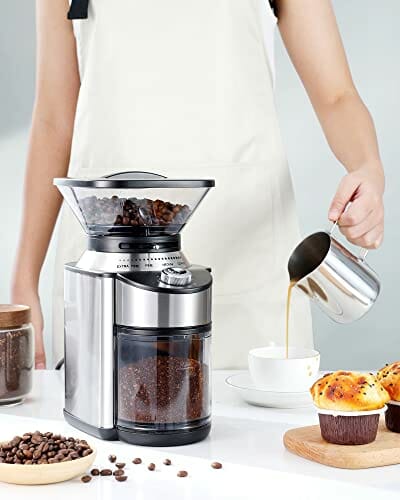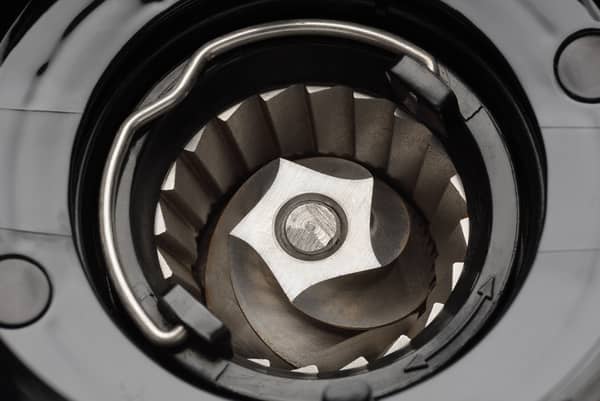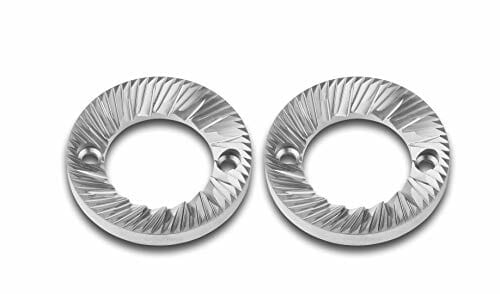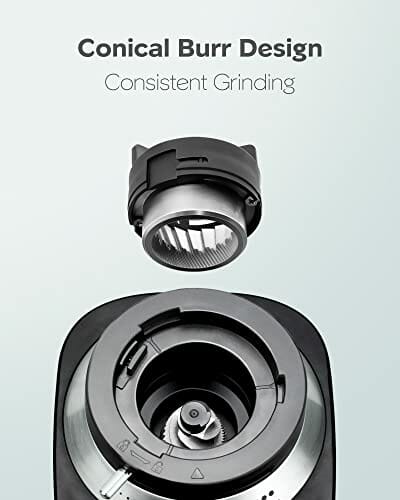Coffees are complicated. Particularly with regards to the bunch of various grinders out there.
You don’t have to explore for well before you understand that a burr grinder‘s the method for rolling; cutting-edge grinders won’t provide you with a delicious mug of coffee.
In any case, getting a grinder isn’t just straightforward. You’ve got to consider conical vs flat burr grinders before making your final choice.
What do these specialized differences mean?
What’s more, which is better for roasted coffee than the other?
What are conical and flat burr espresso grinders?
The burrs are the essential “squashing/cutting” system that coffee grinders depend on to crush entire espresso beans to powder.
Flat burrs embrace miniature teeth to crush the espresso beans into tiny particles.
Conelike burrs have a cone-shaped inward burr that’s turning and a fixed outer serrated burr.
Both conical and flat burrs can be utilized for coffee and trickle coffee machines. In any case, specific individuals can contend that one’s better compared to the next, yet that’s not the situation.
It relies upon what sort of espresso brewing you enjoy and what ascribes you esteem in a grinder.
With that far removed, we can say one slam dunk regarding these grinders: the least expensive burr grinders can more often than not be cone-shaped.
All in all, if you see section-flat grinders, the vast majority of them can be furnished with cone-shaped burrs.
The equivalent goes for hand grinders. They have tapered burrs since it’s incredibly challenging to place significant flat burrs into that sort of plan. So, assuming you esteem something convenient, it’ll, as a rule, have cone-shaped burrs.
Once more, this isn’t genuinely terrible. On the contrary, numerous bad-to-the-bone coffee nerds utilize a manual grinder with conelike burrs and worship it!
This YouTube video below goes into the different burr shapes and styles.
How does burr shape influence your coffee quality?
A burr coffee grinder chips away at the standard of grating between two surfaces.
With a cone-shaped burr, every coffee bean needs to go through expanding flats of erosion as they get squashed by the turning burr.
The beans are pulled down the inexorably restricted section first via gravity and then by the burr, behaving like a drill.
All the coffee beans need to go through a similar thin hole between the inward and outer burr, in the long run, implying that every particle has a comparable breadth.
Honestly, there’ll be some variety, be that as it may. Regularly you’ll likewise get some residue/tiny particles that are “fine” in coffee dialect.
Flat burrs work a piece contrastingly since they don’t work at slower speeds. Instead, the teeth and the consistent turning gradually push more minor coffee chips out towards the crushing chamber’s exit.
A uniform toil size like that’s significant for an even extraction.
Grind consistency
So that’s a touch of how they work. In any case, which one’s better?
There are many boundaries that we want to take a gander at to address that inquiry.
Above all else, you should often think about grind consistency, otherwise known as particle consistency.
Suppose we grind one scoop of coffee. Perhaps 50% of the scoop can have particles that are 600 microns in size.
The remainder of the particles can fall in a ringer bend shape of more minor and significant particles. So, terms like particle size allude to this bend.
Having a high pinnacle and a restricted distribution are typically seen as being attractive. That’s because it guarantees that the majority of the particles extract at a similar rate.
Fines (the dusty, minuscule particles) are typically bothersome. That’s because they’ll generally over-extract and make harshness.
They also obstruct channels or screens when pouring over coffee, which causes slowing down and stopping up.
On the off chance that a grinder comes with two slightly isolated pinnacles, one smaller and one bigger, we consider it a bimodal burr grinder after checking out the distribution. On the other hand, assuming that there’s just one pinnacle, we call it unimodal.
Unimodal is viewed as the sacred goal for channel coffee, while bimodal is more reasonable for coffee.
Taste differences
To the extent taste goes, bimodal makes a more finished cup with a body pursued by numerous baristas.
Then again, unimodal can, in general, creates a cup with more excellent clearness. That’s the reason numerous coffee upstarts favor their flat burr coffee grinder for channel coffee.
Nonetheless, numerous baristas favor flat burrs for grinding coffee since they offer a rounder and coordinated character profile.
It’s additionally crucial that some flat burrs offer what could be called a staggeringly perfect shot profile.
Interestingly, numerous other flat burrs give a particle distribution that highlights body and pleasantness. So even inside the universe of flat burrs, there can be subtle differences as far as flavor.
Grind Sizes and Settings
For coffee and Turkish-style coffees, you need to utilize an adequate drudgery size. That’s the place where the burrs are close so they can create smaller particles.
For French press and trickle coffee, you need to utilize a medium setting. That is because the burrs rest in the middle of “fine” and “coarse.”
Most burr coffee grinders can make a decent medium toil. Nonetheless, it usually is more testing to do an extremely fine or coarse struggle since it requires better alignment and accuracy between each burr.
Conelike Burrs
Pros
- They’re generally affordable, even though they come at all value sections.
- Adjustment and arrangement by the client usually are not needed.
- Get less hot. Be that as it may, this variable’s just vital in a café climate.
- Usually, it’s simpler to dial in coffee shots with conical grinders
Cons
- Will more often than not be more bimodal
- It very well may be more astringent character insightful
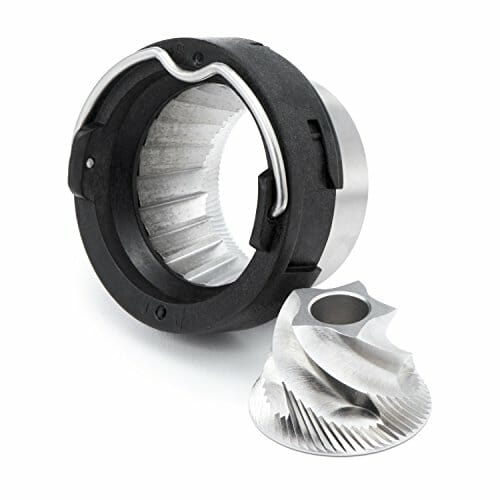
Flat Burrs
Pros
- More steady/uniform grounds
- Regularly, they dominate at both pour-over and coffee
- It’s typically conceivable to put in new burrs and examination with an alternate calculation
Cons
- It can be interesting to adjust for home grinders
- More costly
- Simple to change the toil size
Noise and maintenance
Two significant variables with regards to buying a burr grinder are noise and maintenance. While those variables are substantial, they don’t have a lot to do with the burr type utilized in the gadget. Typically, less noise involves the material used for the body, the RPM, and the calculation of the burrs.
Maintenance depends on the amount of old coffee the grinder holds. These are regularly trapped ground in the crushing chamber, chute, or different little hiding spots of the gadget.
High maintenance’s an issue since it implies that there’ll be a few “trades” each time you grind. As such, it means that you may get a touch of old coffee in the filter.
Utilizing either a flat or conelike burr isn’t the central part of maintenance. All things being equal, the general plan of the grinder’s undeniably more basic.
FAQs
Do you need a conical burr grinder?
Indeed, cone-shaped burrs merit more resources. They’re way better than cutting-edge grinders! Likewise, they have a lower price tag than flat burrs, making them a decent passage point into the universe of crushing.
You can make delicious coffee utilizing a conelike burr, yet you’ll have to get some training.
Which is better flat or conical burr grinder?
There are no proper replies here. It relies upon your taste inclinations.
Luckily, having one of the best flat burr grinder at my work has been great as it gives me a cleaner taste in my coffee.
What are the advantages of conical burrs over flat burrs?
Cone-shaped burr grinders can generally make coffee shots with more thickness and surface.
They’re additionally found on less expensive grinders than flat burrs, implying that they’re bound to be your passage into the universe of coffee.
For example, the least expensive ones are most likely the ceramic burr found on numerous section-flat hand grinders.
The drawback’s that they can deliver a ton of residue, so you want to look out for that.
How’d I pick either flat or conical burr grinders?
It isn’t easy to express that without knowing what type of coffee you prefer to drink. For example, if you appreciate sweet-tasting coffees, go for a cone burr. Then again, assuming your liking towards other unsweetened coffees, go with a flat burr.
Wrapping Up My Thoughts on Conical vs Flat Burr Grinders
Assuming you’re a first-time purchaser searching for something modest and straightforward to utilize, then, at that point, go for a conelike burr. Because of the value, it ought to likely be the default choice for most first-time purchasers.
Then again, assuming you know what you need, and you’re searching for something super perfect and high-end, then, at that point, go for a flat burr.
Either way, the conical vs. flat burr grinder answer all comes down to you. I personally like conical burr grinders.

![Conical vs Flat Burr Grinder: 4 Questions [Answered] Which Is Best For The Ideal Grind? 2 Conical Vs Flat Burr Grinder_Which Is Best For The Ideal Grind](https://coffeegeek.tv/wp-content/uploads/2021/12/Conical-Vs-Flat-Burr-Grinder_Which-Is-Best-For-The-Ideal-Grind-1024x536.jpg)
